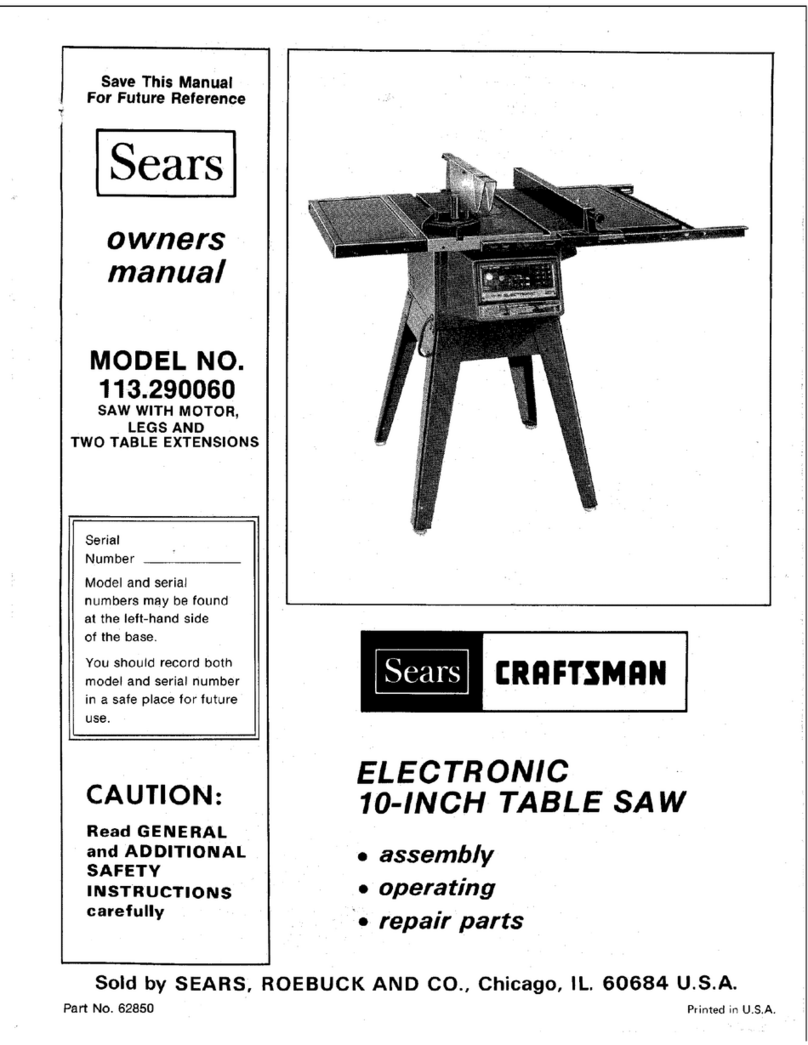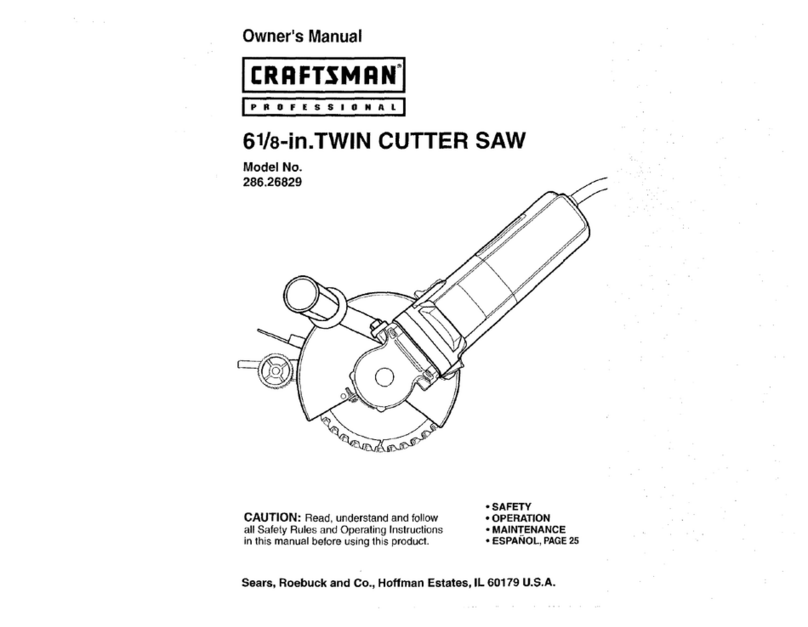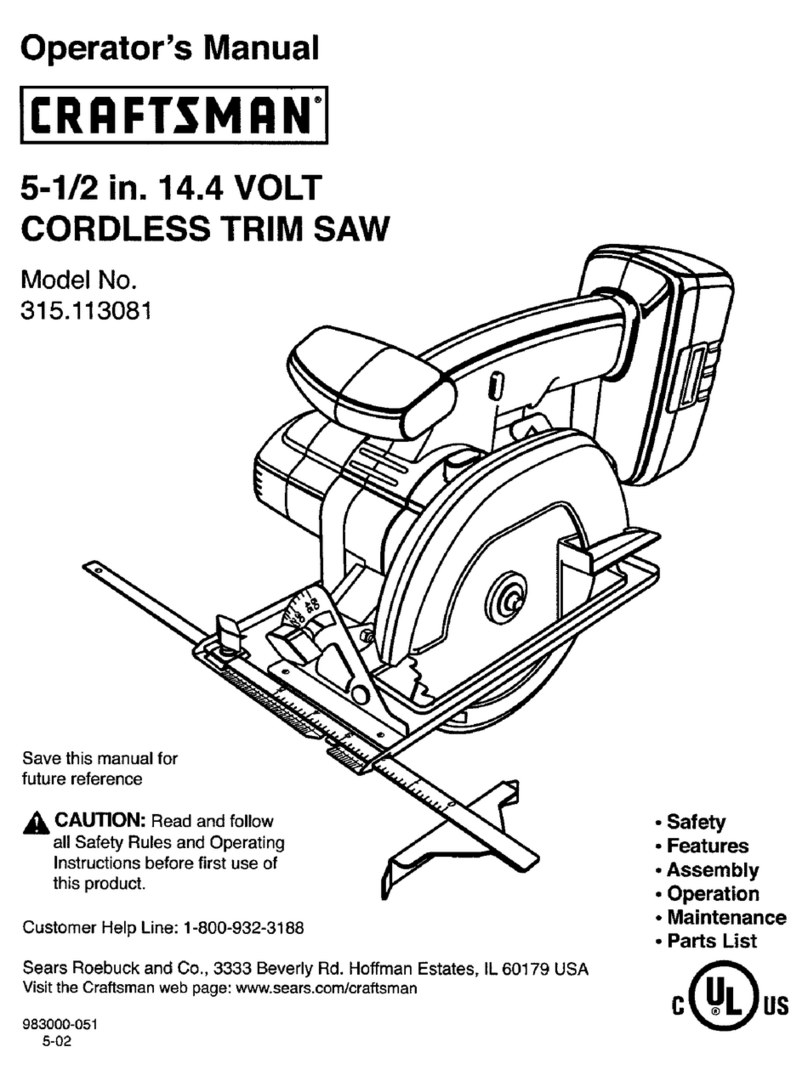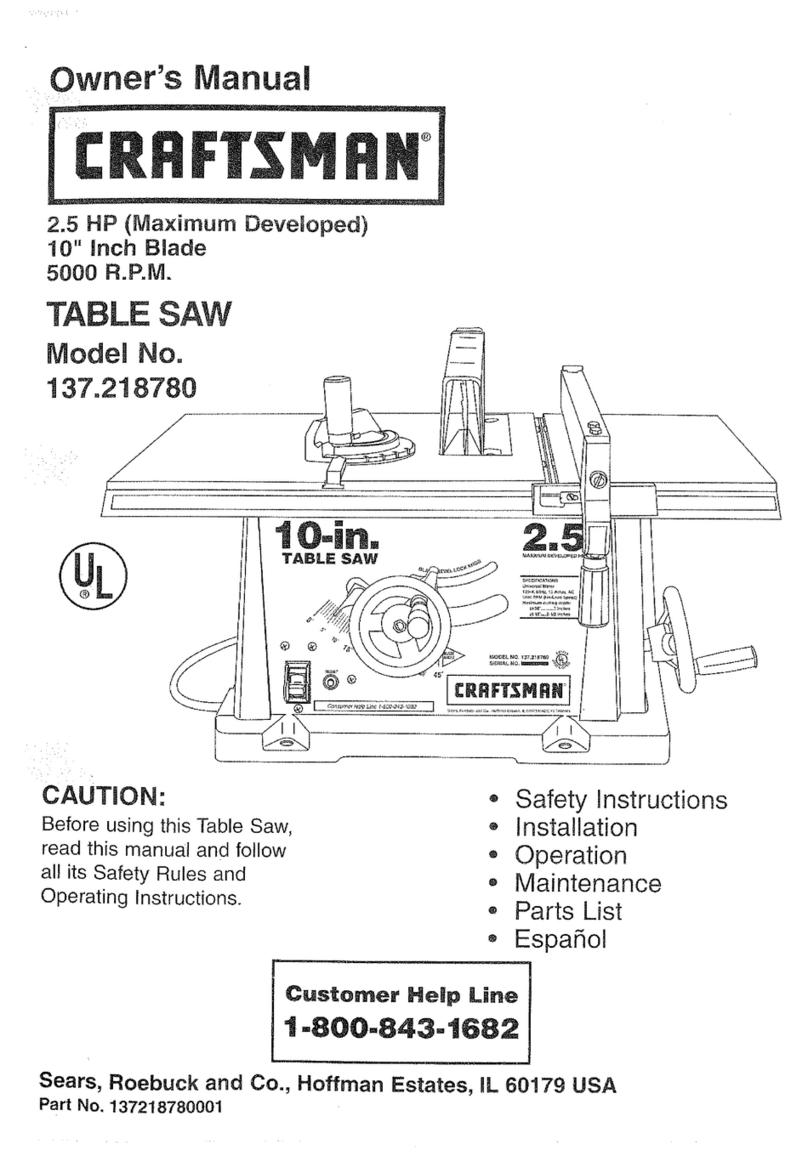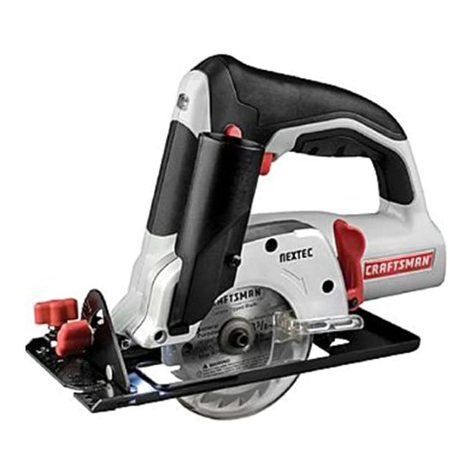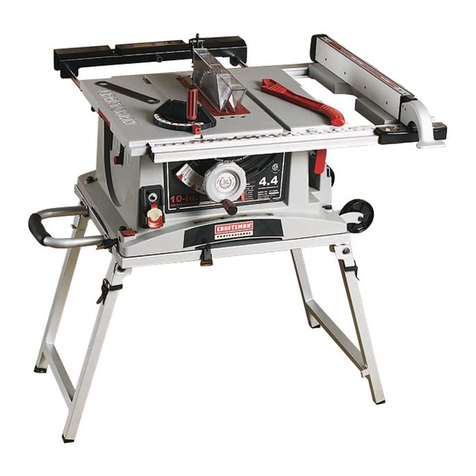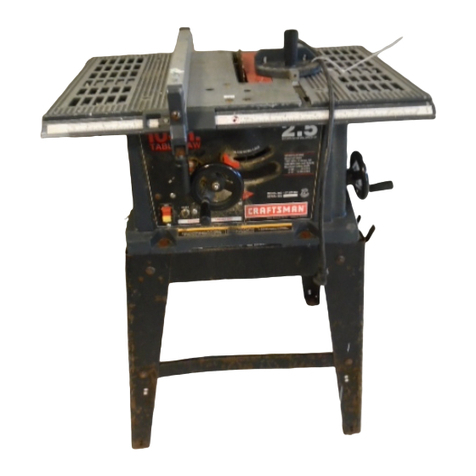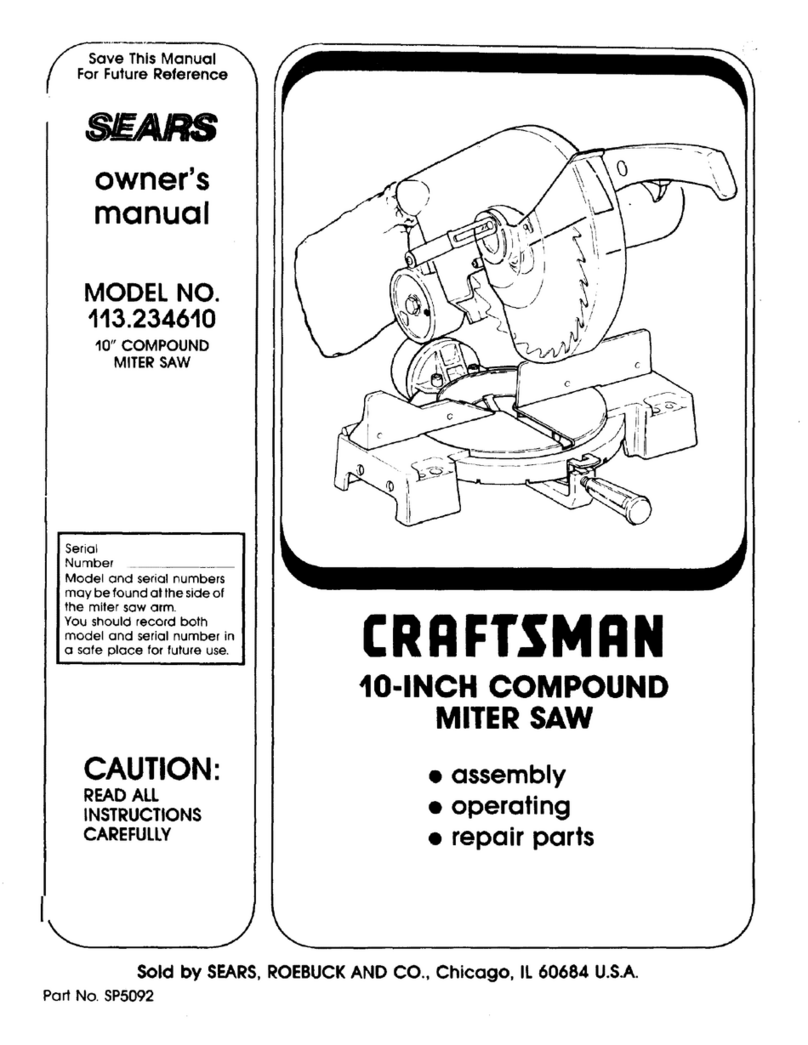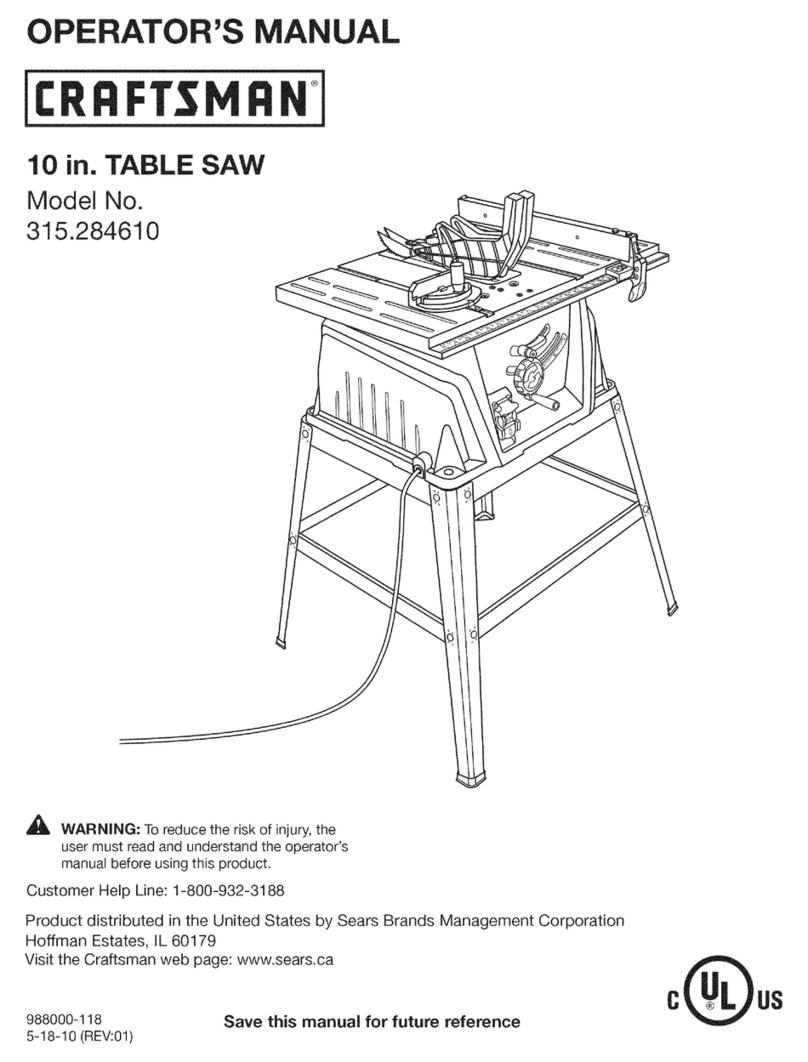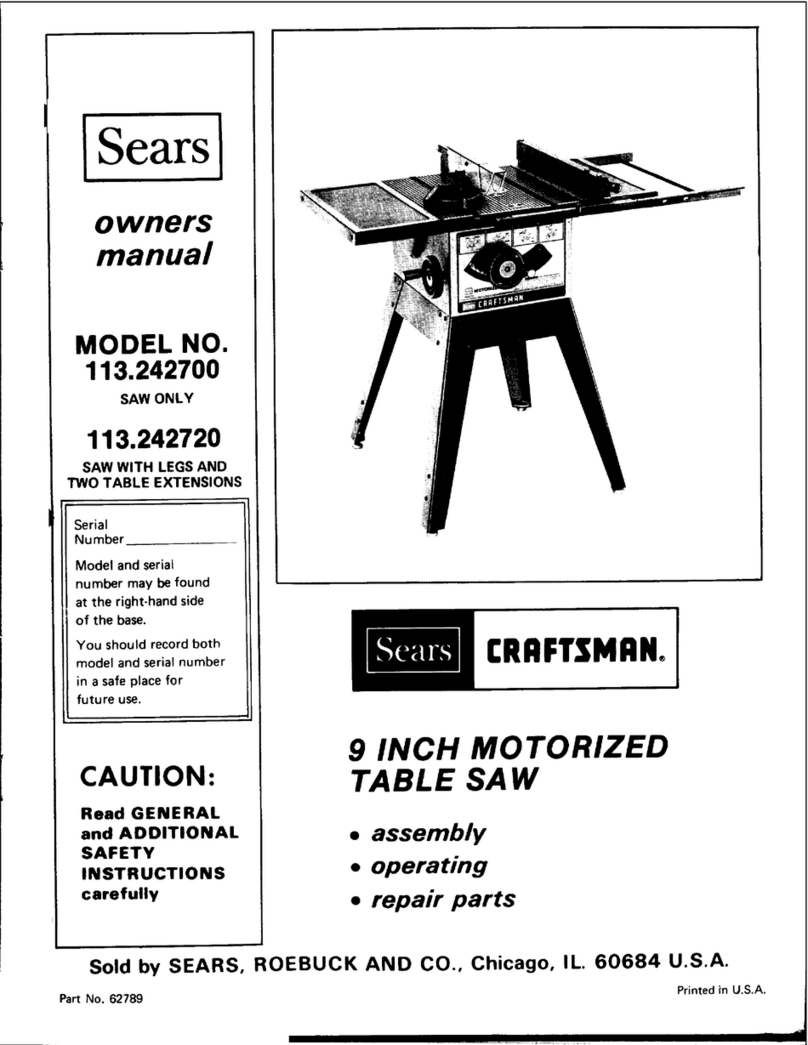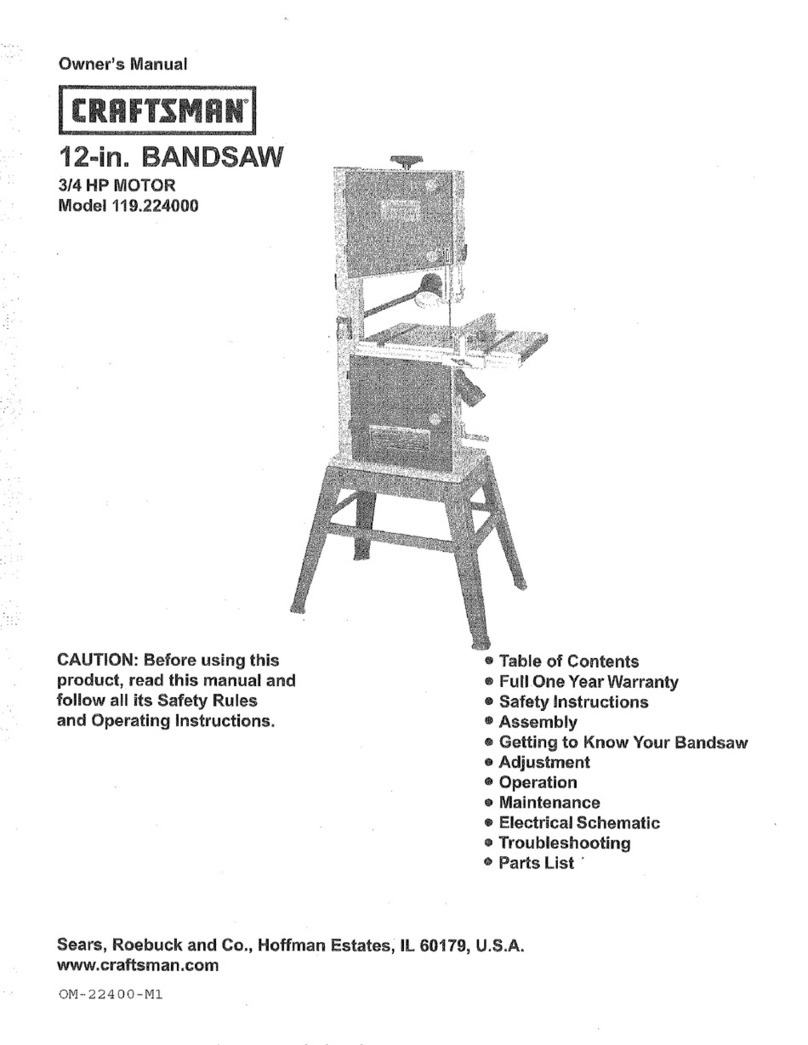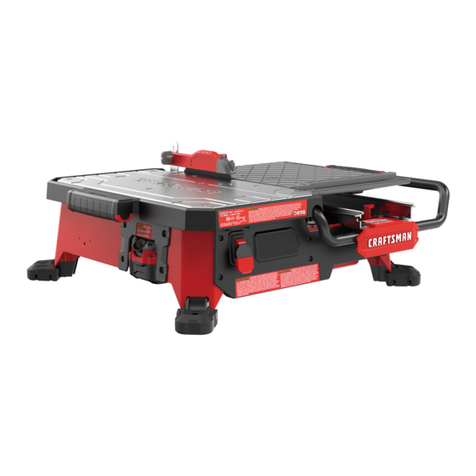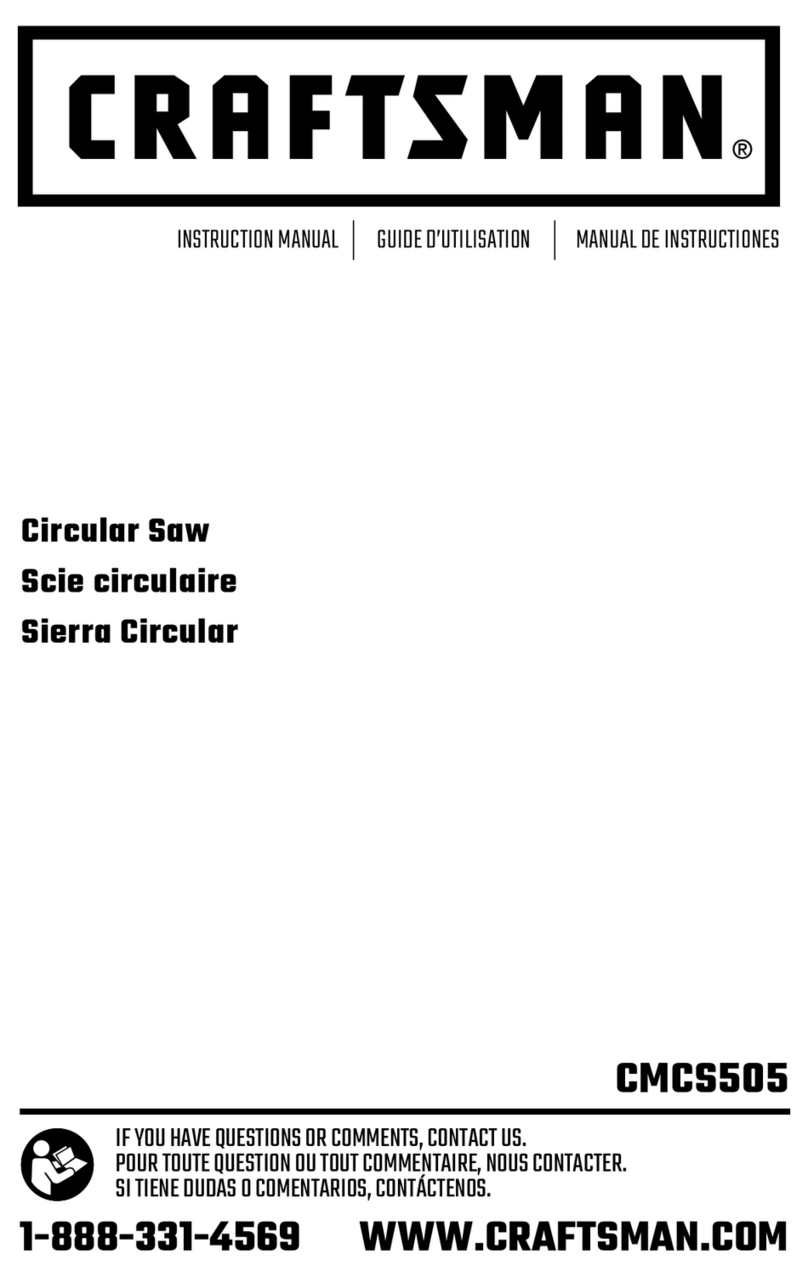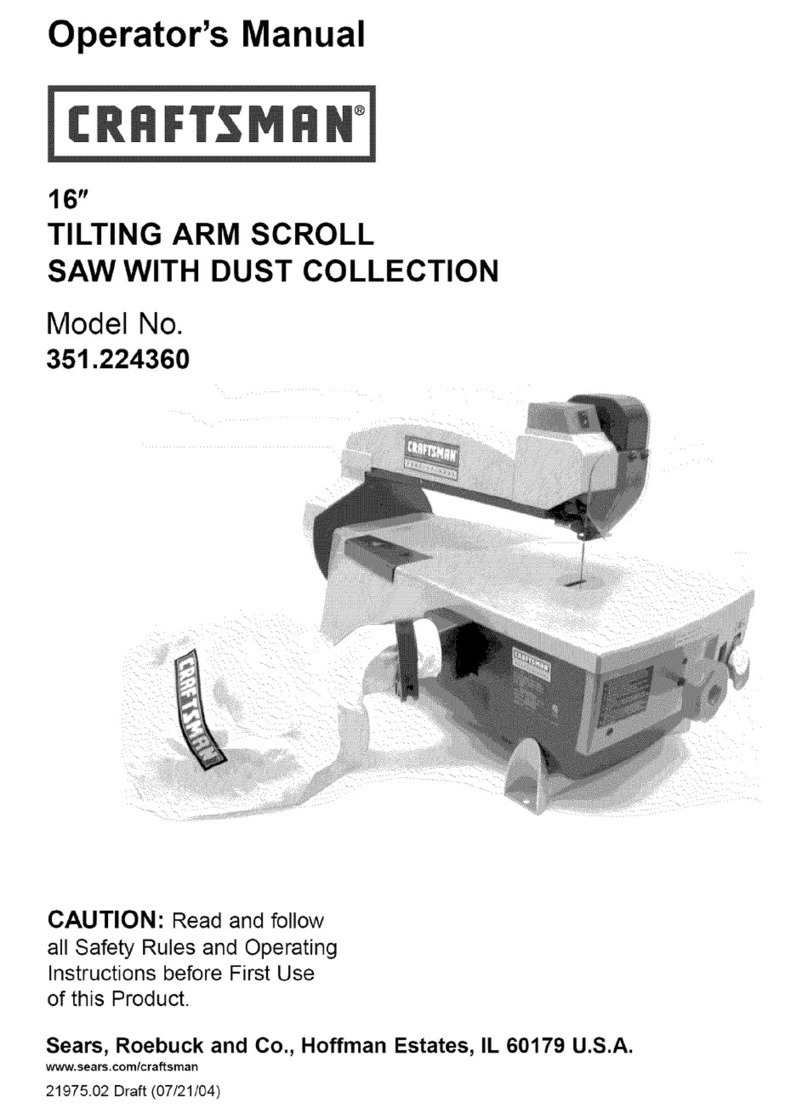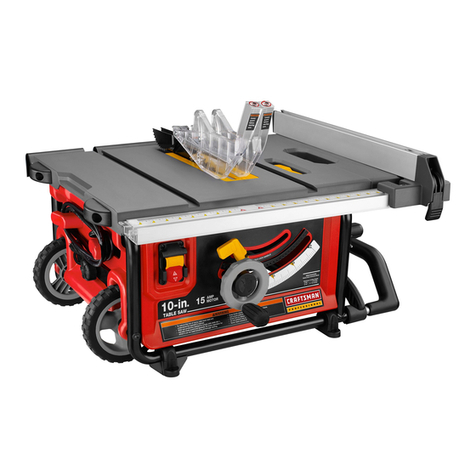24.DONOToperatethetoolifyouareundertheinfluence 14.CUTonlyoneworkpieceatatime.Makesurethetable
ofanydrugs,alcoholormedicationthatcouldaffectyour isclearofeverythingexcepttheworkpieceandits
abilitytousethetoolproperly, guidesbeforeyouturnthesawon.
25.ALWAYSoperatethebandsawinawell-ventilatedarea
andprovideforproperdustremoval.Usedustcollection
systemswheneverpossible.Dustgeneratedfromcertain
materialscanbehazardoustoyourhealth.
15.ALWAYSWATCHthesawrunbeforeeachuse.Ifthere
isexcessivevibrationorunusualnoise,stopimmediately.
Turnthesawoff.Unplugitimmediately.Donotstartthe
sawagainuntiltheproblemhasbeenlocatedand
corrected.
SPECIFIC SAFETY INSTRUCTIONS
,TO AVOID INJURY from unexpected movement, make
sure the saw is on a firm, level surface, properly
secured to prevent rocking. Make sure there is adequate
space for operating. Bolt the saw to a support surface to
prevent slipping, walking, or sliding during operation.
2. TURN the saw OFF and unplug the saw before moving it.
3. USE THE CORRECT size and style of blade.
4. USE blades recommended at 2700 FPM or greater.
5. MAKE SURE the blade teeth point down and towards
the table.
,BLADE GUIDES, SUPPORT BEARINGS AND BLADE
TENSION must be properly adjusted to avoid accidental
blade contact and to minimize blade breakage.
To maximize blade support, always adjust the upper
blade guide and blade guard so that it is 1/8 inch above
the workpiece.
7. TABLE LOCK HANDLE should betight.
8. USE EXTRA CAUTION with large, very small or
awkward workpieces.
9, USE EXTRA SUPPORTS to prevent workpieces from
sliding off the table top. Never use another person in
place of a table extension, or to provide additional
support for the workpiece.
!6.
17.
TO FREE any jammed material, turn the switch OFF.
Remove the switch key and unplug the saw. Wait for all
moving parts to stop before removing jammed material.
DON'T LEAVE the work area until all moving parts are
stopped. To childproof the workshop, shut off the power
to master switches and remove the switch key from the
band saw. Store it in a safe place, away from children.
For your own safety, read the entire instruction manual
before operating the band saw.
1. Wear eye protection.
2. Do not wear gloves, necktie, or loose clothing.
3. Make sure the saw is on a firm level surface and
properly secured.
4. USE ONLY THE RECOMMENDED
ACCESSORIES.
5. Use extra caution with very large, very small, or
awkward workpieces.
6. Keep hands away from the blade at all times to
prevent accidental injury.
7. Do not remove jammed cutoff pieces until the blade
has stopped.
8. Maintain proper adjustment of blade tension, blade
guides, and thrust bearings.
9. Adjust upper guide to just clear the workpiece.
t0. Hold the workpiece firmly against the table.
10. WORKPIECES must be secured so they don't twist,
rock, or slip while being cut.
11. PLAN intricate and small work carefully to avoid
pinching the blade. Avoid awkward operation and hand
positions to prevent accidental contact with the blade,
12. SMALL PIECES should be secured with jigs or fixtures.
Do not hand hold pieces that are so small your fingers
are under the blade guard.
13. SUPPORT round work properly (with a V-block or
clamped to the miter gauge) to prevent it from rolling
and the blade from biting.
SAVE THESE INSTRUCTmONS _!ill
ELECTRICAL REQUIREMENTS
POWER SUPPLY AND MOTOR SPECIFICATIONS
To avoid electrical hazards, fire hazards, or damage to the
tool, use proper circuit protection. Use a separate electrical,
circuit for your tools. Your saw is wired at the factory for
120V operation. Connect to a 120V, 15 Amp circuit and use
a 15 Amp time delay fuse or circuit breaker. To avoid shock
or fire, if power cord is worn or cut, or damaged in any way,
have it replaced immediately.
GROUNDING INSTRUCTIONS
This tool must be grounded while in use to protect the
operator from electrical shock.
IN THE EVENT OF A MALFUNCTION OR BREAKDOWN,
grounding provides a path of least resistance for electric
current and reduces the riskof electric shock. This tool is
equipped with an electric cord that h_s an equipment
groundingconductor and a grounding plug. The plug MUST
be plugged into a matching receptaclethat is properly
installed and grounded in accordance with ALL local codes
and ordinances.
DO NOT MODIFYTHE PLUG PROVIDED. If it will not fit the
receptacle, have the proper receptacle installed by a
qualified electrician.
IMPROPER CONNECTION of the equipment grounding
conductor can result in risk of electric shock, The conductor
with the green insulation (with or without yellow stripes) is
the equipment grounding conductor. If repair or replacement
of the electric cord or plug is necessary, DO NOT connect
the equipment grounding conductor to a live terminal.
CHECK with a qualified electrician or service person if you
do not completely understand the grounding instructions, or
if you are not sure the tool is properly grounded.
USE ONLY 3-wire extension cords that have 3-prong
grounding plugs and 3-pole receptacles that accept the
tool's plug. Repair or replace damaged or worn cord
immediately.
Use a separate electrical circuit for your tools. This circuit
must not be less than #12 wire and should be protected with
a 15 Amp time lag fuse. Before connecting the motor to the
power line, make sure the switch is in the OFF position and
the electric current is rated the same as the current stamped
on the motor nameplate. Running at a lower voltage will
damage the motor.
This tool is intended for use on a circuit that has a
receptacle like the one illustrated in FIGURE A. FIGURE A
shows a 3-prong electrical plug and receptacle that has a
grounding conductor, tf a properly grounded receptacle is
not available, an adapter (FIGURE B) can be used to
temporarily connect this plug to a 2-contact ungrounded
receptacle. The adapter (FIGURE B) has a rigid lug
extending from it that MUST be connected to a permanent
earth ground, such as a properly grounded receptacle box.
THE TEMPORARY ADAPTER SHOULD BE USED ONLY
UNTIL A PROPER GROUNDED OUTLET CAN BE
INSTALLED BY A QUALIFIED ELECTRICIAN. The
Canadian Electrical Code prohibits the use of adapters.
CAUTION: In all cases, make certain the receptacle is
properly grounded. If you are not sure have a qualified
electrician check the receptacle.
Fig. A3-Prong Plug
Grounding Prong
Properly Grounded
3-Prong Receptacle
Fig. BGrounding Lug ____.._
(_]/ _1 Make sure This
_.,_--_f-:_... Jis Connected to a
_._¢_p ! i]_" _ Known Ground
__ 't_l _ L----._-" IF" 2-Prong
.._¢_----_-_" _.N. '-_-"--_. Receptacle
//,i<Y_- Adapter
This band saw is for indoor use only. Do not expose to rain
or use in damp Ioc:ations.
GUIDELINES FOR EXTENSION CORDS
USE PROPER EXTENSION CORD. Make sure-your
extehsion cord is in goed condition. When using an
extension cord, be su[_ ts use one heavy enough to carry
the current your produc'_will draw. An undersized cord will
result in a drop in line voltage and in loss of power which will
cause the too! to overheat. The table below shows the
correct size to use depending on cord length and nameplate
ampere rating. If in doubt, use the next heavier gauge. The
smaller the gauge number, the heavier the cord.
SAVE THESE NSTRUCT ONS
5
